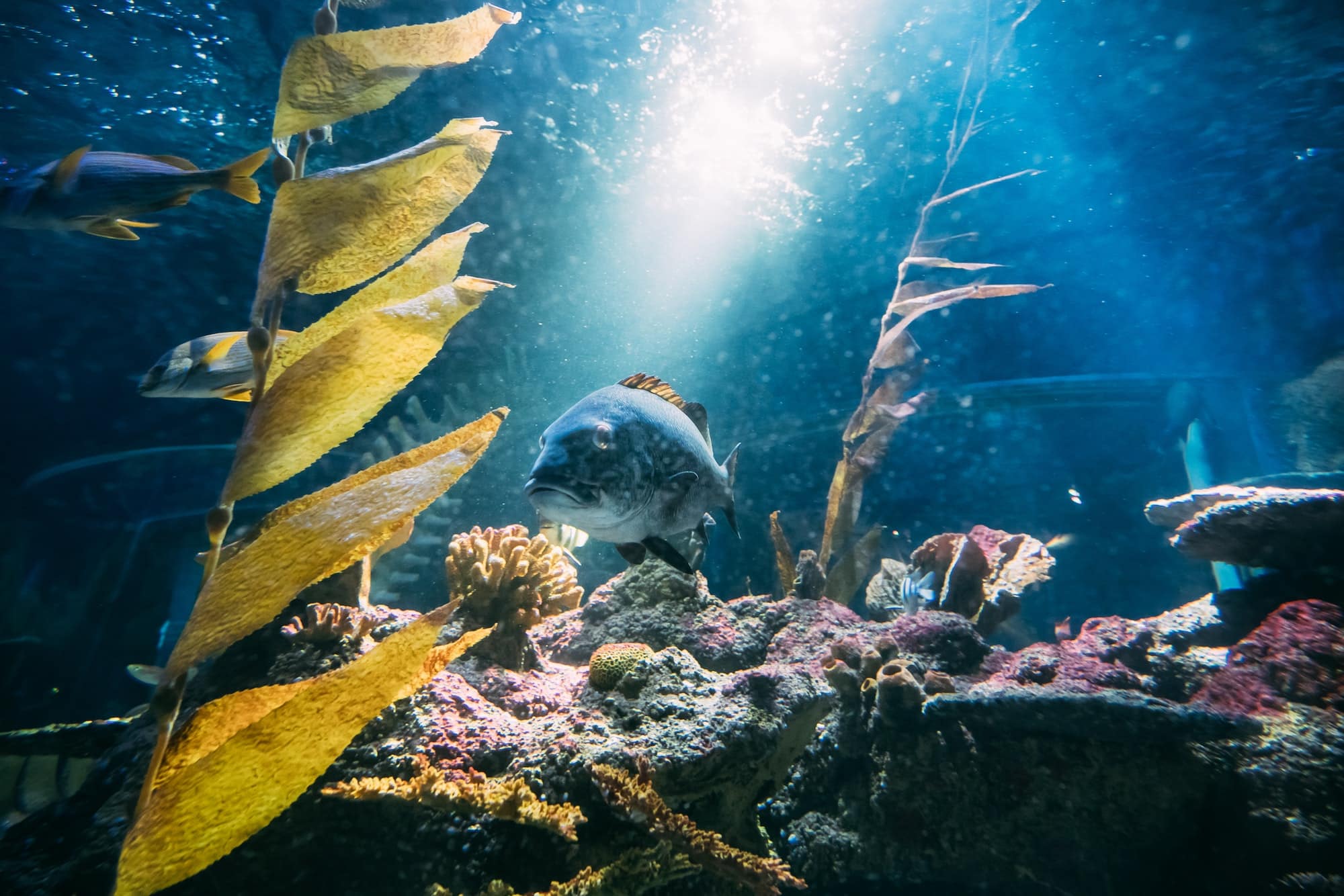How Can You Set Up a Low-Maintenance Freshwater Aquarium for Beginners?

If you’ve always been fascinated by the undersea world and the colorful species that live there, then setting up a freshwater aquarium in your home might be the perfect hobby for you. But, before you jump in with both feet, it’s essential to understand the basics of setting up and maintaining a freshwater aquarium. In this article, we’ll walk you through the steps required to set up a low-maintenance freshwater aquarium that can be a serene, beautiful, and fascinating addition to your home.
Choosing and Preparing Your Aquarium
Before you can dive into the world of aquariums, you first need to choose the right tank. The tank’s size will depend on the number and type of fish you wish to keep. As a general rule, consider that each inch of fish requires a gallon of water. Therefore, a 20-gallon tank could house about 20 inches worth of fish.
A lire également : What’s the Ideal Setup for an At-Home Dialysis Patient to Ensure Comfort and Accessibility?
Once you’ve chosen your tank, it’s time to prepare it for your future aquatic inhabitants. Start by cleaning it thoroughly. Avoid using soap or detergents as these can harm the fish. Instead, use warm water and a clean cloth to wipe down the inside of the tank.
Now, it’s time to set up your tank. Position it in a location away from direct sunlight, which can cause excessive algae growth. Ensure that the surface is level, and there is access to power outlets for the tank’s heater, filter, and lighting system.
Dans le meme genre : What’s the Best Technique for Cultivating an Indoor Bonsai Tree Display?
Adding Water and Substrate
With your tank set up, the next step involves adding the substrate and water. The substrate is the material that lines the bottom of your aquarium. It can be sand, pebbles or specialized aquarium gravel. The choice of substrate will depend on the type of fish and plants you want to keep.
Once your substrate is spread evenly at the bottom of the tank, you can begin to add the water. To avoid disturbing the substrate, place a plate or bowl on it and pour the water onto this. Fill the tank up to about one inch from the top.
The water you use should be dechlorinated as chlorine can be harmful to fish. You can dechlorinate tap water by letting it sit out for 24 hours or using a dechlorinating product.
Setting Up Your Filtration and Heating Systems
The filtration system is a vital component of your freshwater aquarium. Filters help maintain water quality by removing waste products, excess food, and potentially harmful chemicals. There are various types of filters available, including sponge filters, power filters, and canister filters. For beginners, power filters are often a good choice as they are easy to install and operate.
Just as crucial as the filter is the aquarium’s heating system. Most freshwater aquarium fish come from warm tropical waters, so it’s necessary to maintain a consistent temperature in your tank. A good quality aquarium heater, coupled with a reliable thermometer, will ensure the water temperature remains stable.
Once set up, it’s important to cycle your tank. The process, known as the nitrogen cycle, involves encouraging the growth of beneficial bacteria that will help break down waste products in the water. Cycling can take anywhere from two weeks to two months.
Selecting Your Fish and Plants
With your tank set up and cycled, you can now add the real stars of the show — the fish. It’s crucial to research the species you are interested in, understanding their specific needs, behaviors, and compatibility with other fish.
Start by adding a small number of fish and monitor their health and behavior closely. This will help ensure your tank environment is safe and suitable for them.
Choosing plants for your aquarium is equally important. Planted aquariums are not just aesthetically pleasing; plants also help maintain water quality by absorbing nitrates, providing shelter for fish, and contributing to the overall ecosystem of your tank.
Maintenance of Your Freshwater Aquarium
Finally, maintaining your aquarium is an ongoing task. Regular water changes, routine filter checks, and monitoring the health of your fish and plants will all contribute to a successful, low-maintenance aquarium.
Observe your fish daily for any signs of illness or stress. Regularly test the water for pH, ammonia, nitrite, and nitrate levels, and adjust as needed.
Remember, an aquarium is a living ecosystem. With time and attention, it will develop and change, becoming more stable and self-sustaining. With patience, you will have a stunning underwater world right in your own home.
Dealing with Aquarium Water Quality and Regular Water Changes
Keeping your tank water quality at optimal levels is crucial for the health and welfare of your tank’s inhabitants. This involves regular monitoring and adjustments of water parameters such as pH, ammonia, nitrite, and nitrate levels.
To maintain water quality, the most important routine job will be to carry out water changes. Water changes involve removing a portion of the tank water and replacing it with fresh, dechlorinated water. This process helps dilute harmful chemicals and replenish essential minerals.
For a beginner-friendly, low-maintenance freshwater aquarium, aim for weekly water changes of around 10% to 20% of the total tank volume. The frequency and quantity of water changes can depend on several factors including the tank size, the number of fish, and the efficiency of your filtration system. A water test kit can be a very helpful tool in determining when to perform water changes.
Regularly checking the water temperature is also crucial. A stable water temperature is important for the well-being of tropical fish. Sudden fluctuations can stress fish and make them susceptible to disease. A quality aquarium heater and a reliable thermometer are essential tools to ensure your tank’s temperature remains stable.
Using Additional Equipment for a Healthier Freshwater Aquarium
Additional equipment like an air pump, filter media, and an aquarium stand can greatly contribute to the overall health of your freshwater aquarium.
An air pump is not a mandatory requirement but it can be beneficial. It aids in the oxygenation of the tank water and improves water movement, preventing stagnant areas. This also helps in promoting the growth of beneficial bacteria, crucial for the nitrogen cycle.
The filter media, which can be sponges, ceramic rings, or activated carbon, amongst others, provides a home for beneficial bacteria. These bacteria play a vital role in breaking down harmful substances like ammonia and nitrites.
A sturdy aquarium stand is crucial. It needs to be capable of supporting the weight of your fully set up and filled aquarium. The stand should also match your gallon tank size, to distribute the weight evenly and prevent any untoward incidents.
Conclusion: Enjoying Your Low-Maintenance Freshwater Aquarium
Setting up a low-maintenance freshwater aquarium is not a task to be rushed. It involves careful planning, patience, and a deep understanding of the various elements involved, be it the selection of the right fish, the choice of live plants, or understanding the importance of the nitrogen cycle.
With your aquarium set up, involving regular water changes, close monitoring of water parameters, and routine health checks for your fish, you can maintain a thriving aquatic environment. Remember, your aquarium is more than just a hobby. It is a commitment to the well-being of the aquatic life you have chosen to care for.
Enjoy the experience and take pride in the stunning underwater world you’ve created right in your home with your planted aquarium. It’s an exciting journey that provides a fascinating glimpse into the world of marine life. By adhering to the principles of low maintenance, you’re creating a sustainable, balanced environment where your tropical fish and plants can thrive. Remember, the joy of fishkeeping comes from dedication, patience, and a love for the incredible aquatic world.
